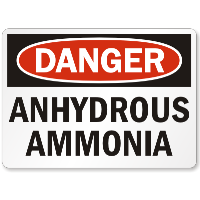U.S. Anhydrous Ammonia Plants have Averaged more than One Accident a Week for 16 Years

In the wake of the Texas fertilizer plant disaster, concerns have been raised over other facilities storing such chemicals that could prove dangerous to local residents.
At the plant in West, Texas, that caught fire, the presence of ammonium nitrate may have caused the enormous explosion. But the facility also had two 12,000-gallon tanks of anhydrous ammonia—a compound that can erupt as well as prove harmful if leaked.
The Center for Effective Government, a nonpartisan watchdog organization, says that almost 10,000 facilities nationwide have stored large amounts (10,000 pounds or more) of anhydrous ammonia.
From 1996 to 2011, there were 939 accidents at these plants—an average of more than one a week.
The accidents, not all of which involved anhydrous ammonia releases, resulted in 19 deaths, 1,651 injuries, and almost $350 million in property damage.
According to the Emergency Response Notification System, a database of toxic chemical spills and other incidents reported to the National Response Center, 870 incidents involving anhydrous ammonia were reported just in 2012.
Anhydrous ammonia’s uses range from fertilizer to industrial refrigerant for cold storage facilities and meat-packing plants. If heated, it can explode.
If released into the air, it can cause serious burning of the eyes (even blindness), as well as to the nose and throat. Exposure to higher levels can result in coughing or choking, and even death.
Almost half of all U.S. states have at least 100 facilities using anhydrous ammonia; 11 have 300 or more.
-Noel Brinkerhoff
To Learn More:
Is Anhydrous Ammonia a Risk to Your Community? (Center for Effective Government)
ERNS Incidents with CHRIS code AMA: Ammonia, anhydrous (2012) (Emergency Response Notification System)
Regulation Loophole Exempted Texas Fertilizer Plant From Stringent Inspections and Rules (Noel Brinkerhoff and Aaron Wallechinsky, AllGov)
Texas Fertilizer Company Hid Dangerous Materials from Regulators (by Noel Brinkerhoff, AllGov)
- Top Stories
- Unusual News
- Where is the Money Going?
- Controversies
- U.S. and the World
- Appointments and Resignations
- Latest News
- Trump to Stop Deportations If…
- Trump Denounces World Series
- What If China Invaded the United States?
- Donald Trump Has a Mental Health Problem and It Has a Name
- Trump Goes on Renaming Frenzy






Comments